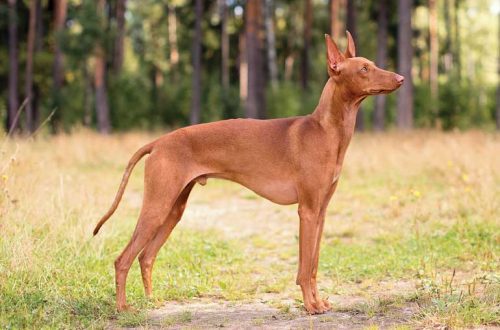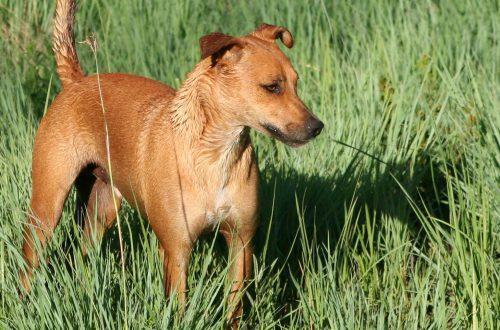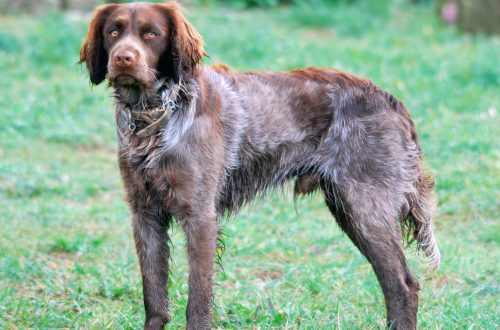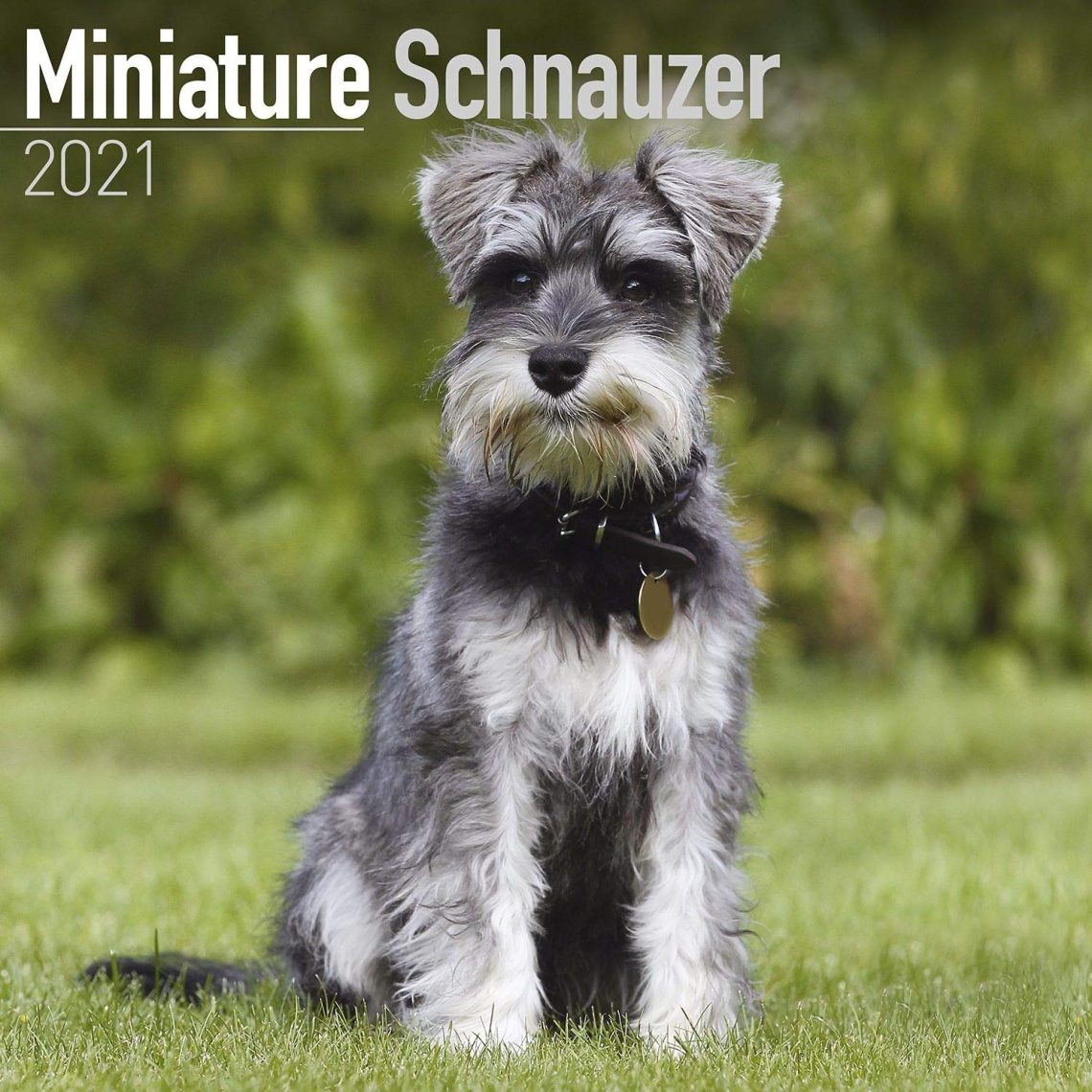
Miniature Schnauzer
Other names: Zwergschnauzer, Dwarf Schnauzer, Wirehaired Pinscher
Miniature Schnauzer is a small but strong, temperamental and cheerful dog. Behind her spectacular and harmless appearance lies a very serious character.
Contents
- Characteristics of Miniature Schnauzer
- Basic moments
- The history of the miniature schnauzer breed
- Video: Miniature Schnauzer
- Appearance of miniature schnauzers
- Photo of miniature schnauzer
- The nature of the miniature schnauzer
- Education and training
- Care and maintenance
- Health and disease of the miniature schnauzer
- How to choose a puppy
- Photos of miniature schnauzer puppies
- How much does a miniature schnauzer cost
Characteristics of Miniature Schnauzer
| Country of origin | Germany |
| The size | small |
| Growth | 30.5-35.5 cm |
| Weight | 6–7 kg |
| Age | up to 15 years |
| FCI breed group | Pinschers and Schnauzers, Molossians, Swiss Cattle Dogs and other breeds |
Basic moments
- The miniature schnauzer is the smallest dog of the schnauzer group and the smallest of all service breeds in the world.
- The hunting and watchdog qualities that dominate the character of the progenitors of miniature schnauzers are fully preserved in representatives of this breed. Vigilance, fearlessness and intuition allow them to serve in the police and customs.
- A miniature miniature schnauzer with a funny appearance feels like a big, serious dog, so at any moment it is ready to defend its home and owner, to whom he is selflessly devoted.
- Zwerg gets along well with all family members, especially loves children, for whom he becomes a wonderful companion in games and entertainment. Giving his sincere love to his family, he is in dire need of reciprocal feelings.
- Energetic miniature schnauzers have excellent athletic abilities.
- The dog needs education and training. In this case, she shows the best features of her breed: courage, intelligence, sensitivity, endurance, devotion.
- In urban conditions, the tsvergs feel comfortable, but they prefer life in a country house.
- Miniature Schnauzers need regular grooming for their thick, coarse coat. They systematically require trimming and haircut.
- There are 4 generally recognized colors of zwergschnauzers: black, white, black and silver and “pepper and salt”. There are other options recognized in individual countries.
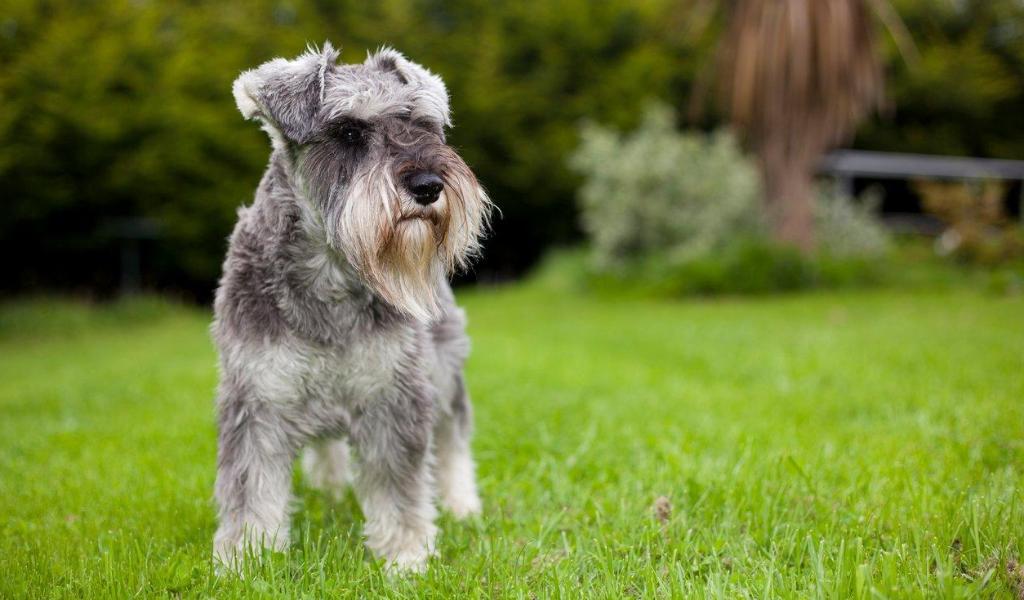
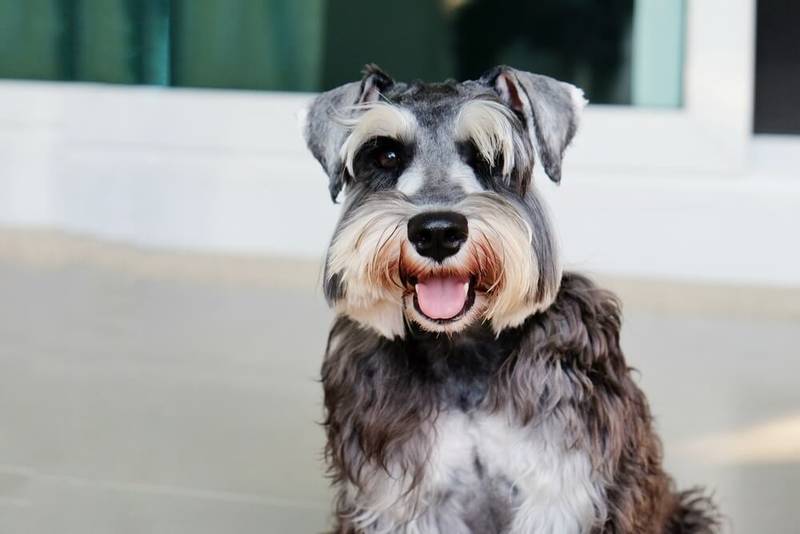
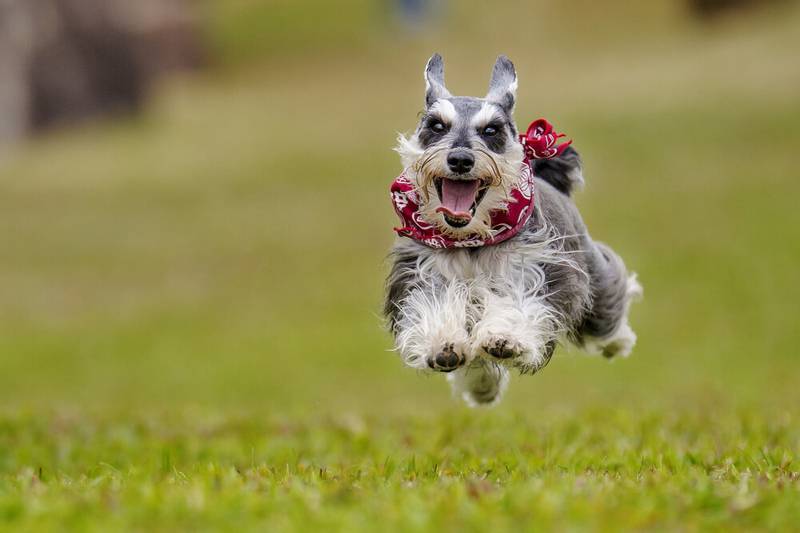
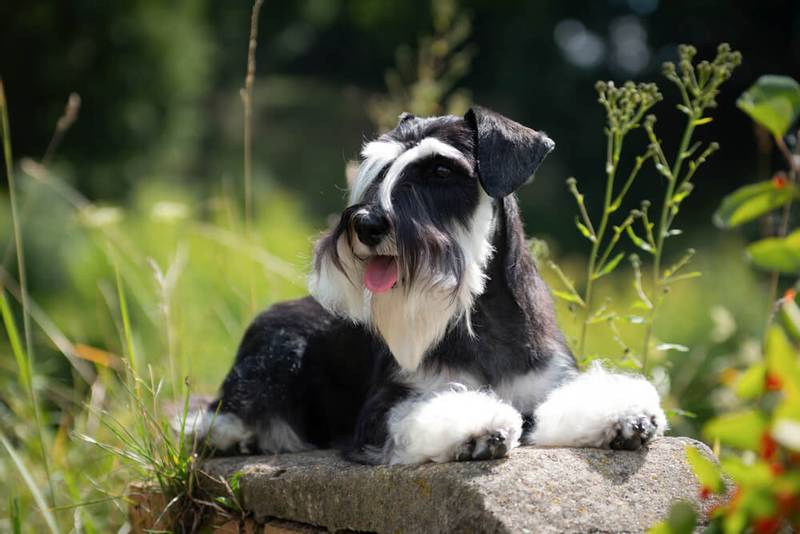
Miniature Schnauzer is a versatile dog. He can be a hunter, a sensitive watchman, a strict customs officer, or he can simply illuminate your house with rays of joy and happiness. They say about this brave temperamental dog: “He is always in a good mood.” His energy is manageable, and the zwerg maintains a cheerful disposition even at a venerable age. He is a family favorite, enthusiastically taking part in collective holiday fun, shopping trips, outings, always ready to keep his owners company, going for a run or a bike ride, not averse to playing football. According to the FCI rating, miniature schnauzers are among the ten most popular dogs on the planet.
The history of the miniature schnauzer breed
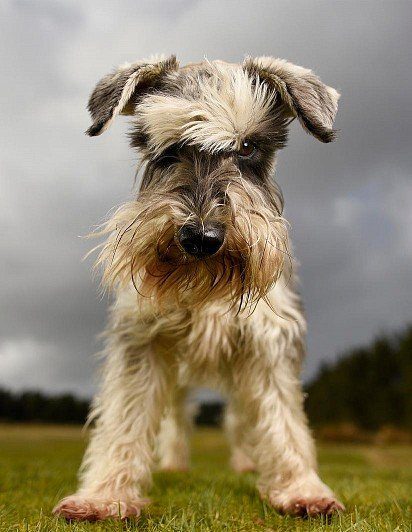
It is reliably known that the historical homeland of miniature schnauzers is Germany. Presumably their progenitors are German Pinschers – a breed of ancient origin. These medium-sized dogs were famous for their ability to mercilessly destroy small rodents, especially rats, and had excellent guarding qualities. It is known that initially smooth-haired and wire-haired puppies were found in the German Pinscher litter. From the middle of the 19th century, breeders began to separate the offspring of pinschers. Smooth-haired dogs continued to be called pinschers, and wire-haired dogs were called stable pinschers or rattler (rat-catchers). The latter soon got a name – schnauzers, which in German means “muzzle”. It indicated an expressive feature of their appearance – a muzzle with a beard that has a rectangular shape.
Many enthusiastic breeders became interested in the new breed, and soon they began breeding work to create miniature schnauzers, which they called miniature schnauzers. In German, “zwerg” means “dwarf”. According to one version, in addition to the schnauzers themselves, dogs of small breeds were involved in the creation of the breed: affenpinschers , miniature pinschers , poodles , spitz , possibly some breeds of terriers. The opinion that miniature schnauzers appeared solely due to the crossing of the smallest individuals of schnauzers is denied by most dog handlers, since the first miniature schnauzers were completely black, which confirms the participation of at least representatives of affenpinschers in the miniaturization of dogs.
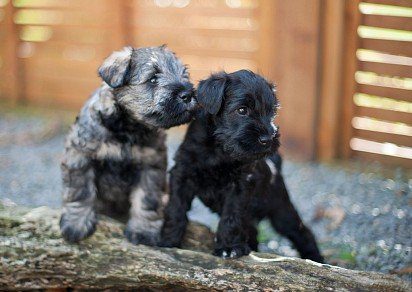
The goal of the breeders was the intention to breed a miniature breed of dogs with the character and temperament of schnauzers and at the same time suitable for living in urban conditions, capable of becoming a companion for their owners. The main initiator of the creation of a new breed was a German breeder, a passionate fan of pinschers and schnauzers, the chairman of the Pinscherschnauzer Club – Josef Berta.
In 1902, the Pincherschnauzer Club published its first stud book, where, in addition to pinschers and standard schnauzers, 14 miniature schnauzers found their place. The first official representative of this breed is a male named Jocchio Fulda Lilliput, born in 1898.
Already in the 30s of the last century, miniature schnauzers became popular both in Western Europe and overseas – in the USA and Canada. The first two representatives of this breed, which appeared in Russia in 1974, were originally from the United States. However, zwergshauzers were mainly brought to the territory of the former USSR from Czechoslovakia, where their planned breeding began in 1962. In 1978, the Czechoslovak border guards, who used zwergschautzers as service dogs, presented a “batch” of their pets to Lvov colleagues. From the Lvov kennel, miniature schnauzers with ups and downs fell into the hands of first Moscow and then Leningrad cynologists. For the “special operation” even the official permission of the USSR Ministry of Internal Affairs was required. Most of today’s Russian champion miniature schnauzers to some extent retain the genes of their “serving” progenitors from Czechoslovakia.
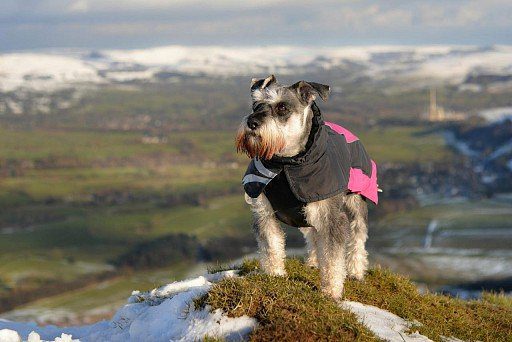
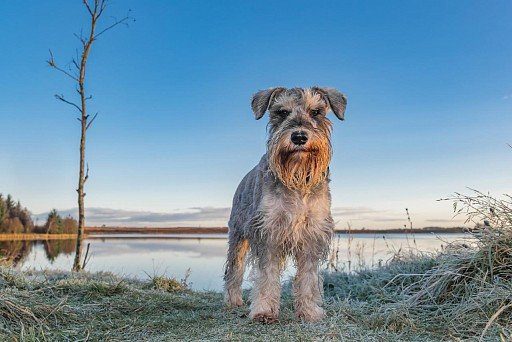
Video: Miniature Schnauzer
Appearance of miniature schnauzers
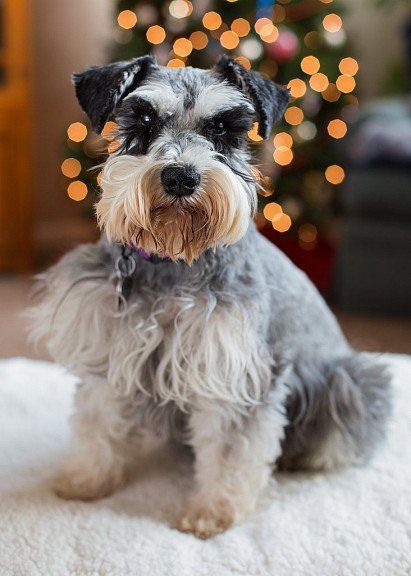

Miniature Schnauzer is a strong, stocky, muscular dog. He looks important, proud, and shaggy eyebrows give his appearance a serious severity – this appearance contrasts with the diminutiveness of the zwerg, which invariably causes a smile.
Frame
A feature of the body of the miniature schnauzer is a high front part, from the withers to the back, the line of the back is tilted. This can be seen even in a month old puppy. This addition helps the zwerg to develop greater speed when running. The lumbar part of the body is short, giving the dog a compact appearance and a square shape. The chest is powerful. At the transition to the groin, the chest forms a graceful arcuate line.
Neck
Medium length, strong, muscular. Nobly bending, smoothly passes into the withers.
Head
The head of the zwerg is proportional to the body, tapering from the ears to the eyes, and then to the tip of the nose. The skull is strong, the occipital protuberance is absent. The forehead is flat and smooth, the line of transition from the forehead to the nose is emphasized by expressive eyebrows. The muzzle is blunt, it is turned off by a bristly short mustache and beard. The nose is black with wide nostrils.
Jaws, teeth, lips
The cheekbones of the miniature schnauzer are moderately developed, the jaws are powerful, the bite is perfect, scissor-shaped. Zwerg’s teeth should be white and strong. The incisors are arranged strictly in a row. Smooth, black lips close to the jaws, their corners are closed.
Ears
The V-shaped ears of the zwerg are set high, the tips are bent down, in the direction of the temples. The front lower edges of the ears are slightly adjacent to the cheeks.
Eyes
The eyes of the miniature schnauzer are small, dark in color, and have the shape of an oval. The look is always lively, curious, expresses vigilance, convincing that the dog is always on the alert. The eyelids should be dry and close to the eyeball.
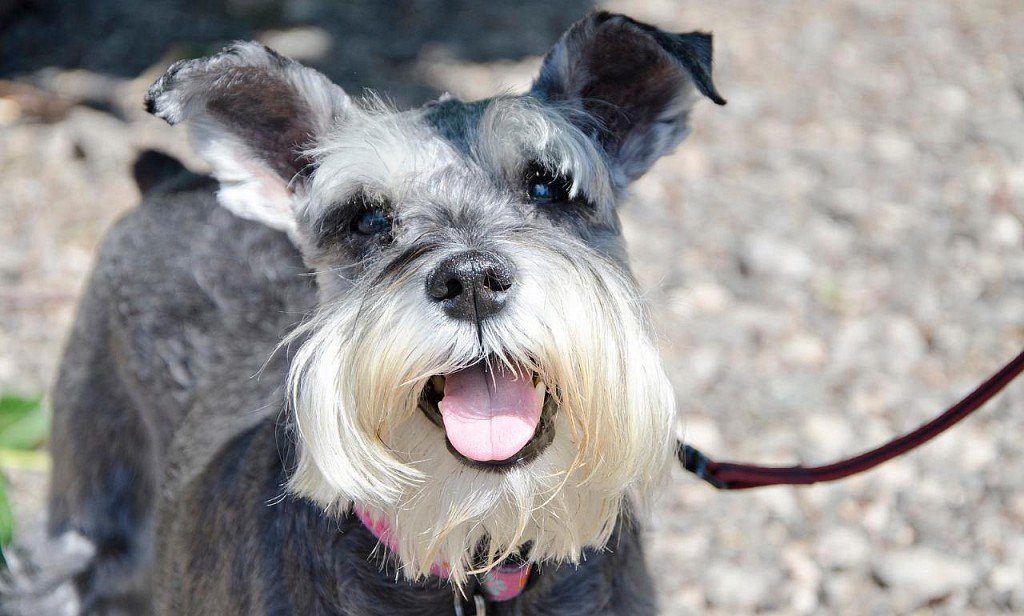

limbs
The forelimbs are strong, straight and muscular. The ulnar bones do not protrude either inward or outward. The hind limbs look oblique when viewed from the side. Set back, they give the dog’s body a swift dynamic outline. The shins are elongated, with developed muscles, passing into strong hocks. The paws are round, the fingers are short, arched (the so-called cat’s paw). Claws black, short.
Moovements
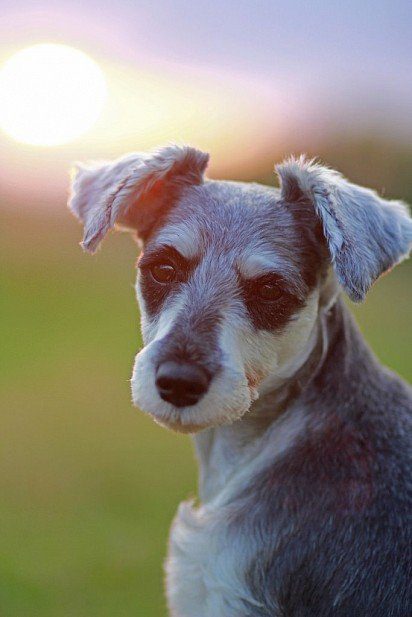

Miniature Schnauzers move freely, agile, energetic, elegant. Their run is sweeping, well-coordinated and fast. In movements, strength, veininess and power are felt. The forelimbs of the dog take out as much as possible forward, the hind limbs provide the necessary impetus to the dynamics of movement. The line of the back remains flat.
Tail
Set on high, pointing upwards. According to modern standards of the FCI (Federation Cynologique Internationale), the tail of a miniature schnauzer must remain natural. Previously, it was supposed to stop it up to three joints. Many owners of zwerg dogs who do not participate in international exhibitions continue to stop their dogs’ tails today for their own aesthetic reasons or for medical reasons: it happens that the dog’s tail is too broken.
Wool
The coat of the zwerg is hard, wiry, thick. The undercoat is also thick and dense. On the neck, shoulders, ears and skull, the coat glistens.
Color
Until 1976, the FCI standards included only two colors of miniature schnauzers – “pepper and salt” and pure black. In 1977, at the initiative of Germany, the organization recognized another color – black and silver, which is today the most popular. The fourth, white, color was approved by the FCI in 1992. In Russia, the chocolate and tan color was recognized in 2006, but the majority of international cynological organizations have not yet approved it.
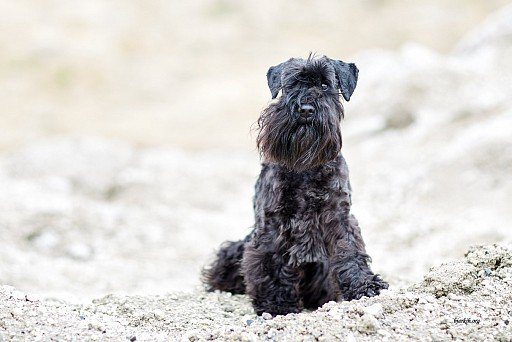

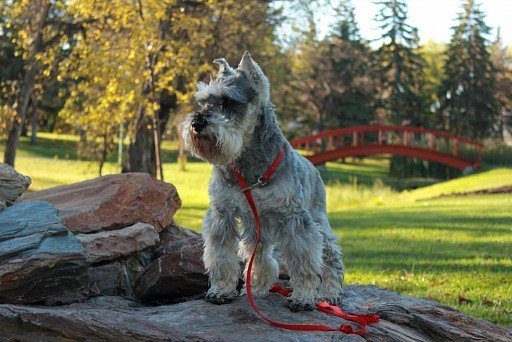

A typical “pepper and salt” color is a combination of two-color (black and white) and one-color (black or white) hairs with the dominance of their two-color part. As a result, depending on the shades, and they are allowed, the coat acquires a uniform dark gray or silver gray color.
The color black and silver implies a dominant black coat and undercoat. Areas of hair above the eyes, on the cheekbones, beard, chest, lower parts of all limbs, the inner region of the hind limbs, around the anus are painted white.
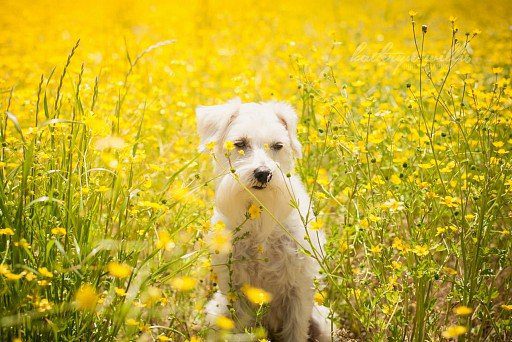

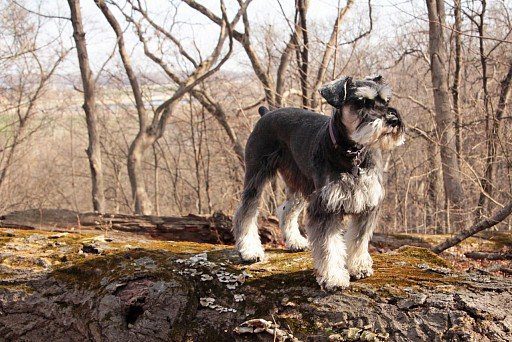

Possible vices
In the appearance of the miniature schnauzer and its character, there are features that do not correspond to the breed standard. Among them:
- the skull is round in shape, its expressive massiveness;
- the presence of folds on the body;
- pointedness and elongation of the muzzle, or, on the contrary, it is too short;
- elongation of the back, as well as its curvature;
- soft, long, wavy coat;
- malocclusion, rare teeth, their yellowness, tendency to caries;
- pathological nervousness and suspicion, self-doubt, timidity or excessive aggressiveness.
Photo of miniature schnauzer
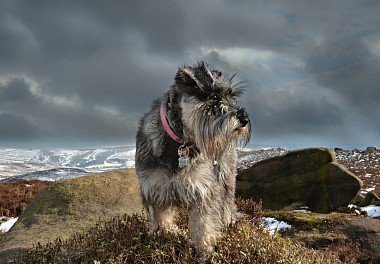

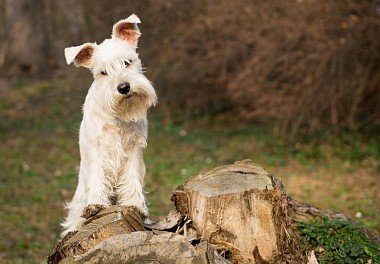

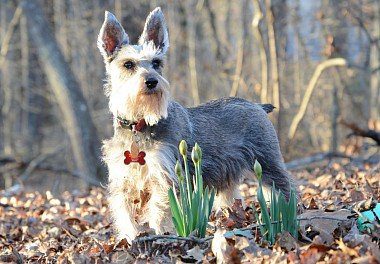

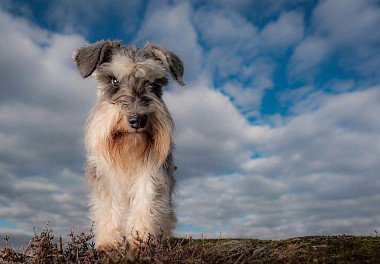

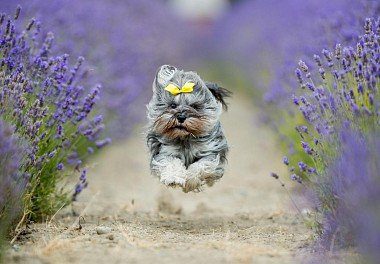

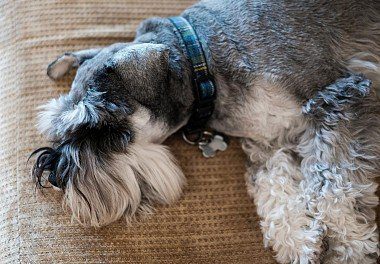

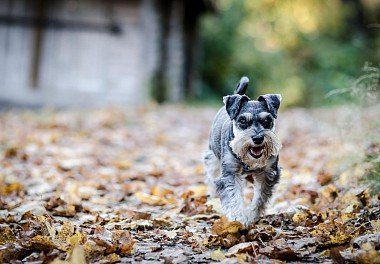

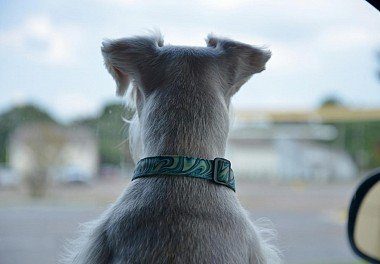

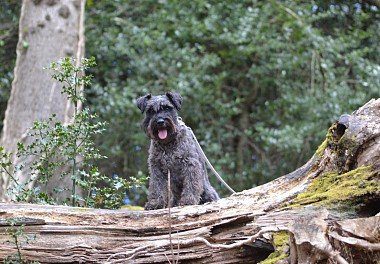

The nature of the miniature schnauzer
Child reads a book to miniature schnauzers
A descendant of the schnauzer, the zwerg inherited from him all the main features of the breed. “Little big dog” – this is how the miniature schnauzer is often characterized, implying the dog’s diminutiveness, coupled with its serious disposition and excellent physical qualities. This dog has a stable nervous system, a lightning-fast reaction, he is vigilant and distrustful of strangers, ready at any moment to demonstrate to a stranger that he is not to be trifled with.
Watchdog qualities in a miniature schnauzer appear from puppyhood. The courage and selflessness of an adult dog knows no bounds, and she copes with the role of the defender of the house and her owners perfectly. A trained dog always acts according to plan: first, it warns the intruder with a menacing growl and a deafening bark, and if this does not work, it will surely leave its own brand name on the enemy’s calf – an impressive bite mark.
Tsverg is a born hunter, a thunderstorm of rats, mice, moles, weasels. He is suspicious of the representatives of the cat tribe. If a zwerg can be taught a certain friendliness to a cat living with him in the same house, then a stranger cat may not be greeted.
The individuality of the miniature schnauzer is in the contrasts of his behavior. He often puts on a dignified and respectable look, but at any moment he can transform into the most cheerful dog in the world. He is cunning, resourceful and sneaky – he inherited these character traits from his ancestors, about whom they say: “When cunning was heard, the schnauzer was the first in line.” At the same time, he is kind-hearted and touchingly devoted to all family members, young and old.
Education and training
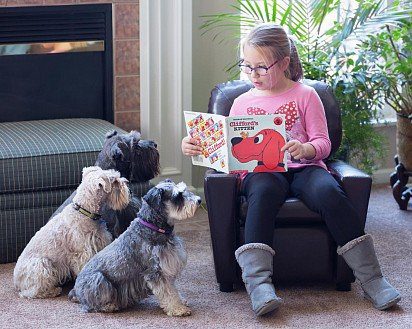

Miniature schnauzers, despite their diminutiveness, need serious education and training, otherwise they turn into hysterical wasteland. The temperament of the zwerg, his natural tendency to aggression, his readiness to engage in a decisive battle at any moment are manifested at a very early age. This forces us to pay special attention to the education of obedience in the dog. First of all, the puppy needs to be made clear who is the boss in the house, since he will only obey the one whom he considers the leader. Actually, miniature schnauzers need authoritarian, but not brutal education.
To suppress the desire of a small zwerg to bite, gnaw on anything and grab everything that lies in a conspicuous place, you need to resolutely, but not rudely. You can try to distract the dog, “talk” to him strictly, and if this does not work, gently shake the scruff of the neck. A good method in the fight against the evil inclinations of the zwerg is to teach him to bring objects of interest to him, and try to discreetly replace them with suitable toys, of which there should be a lot. The little fidget will take it as a game, and will join it with pleasure.
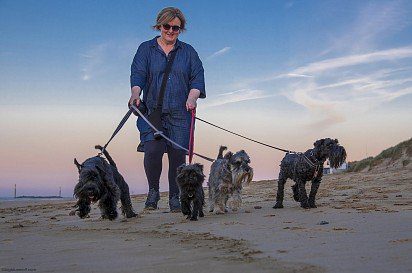

Miniature schnauzers are very smart, hardworking, with rare exceptions, they lend themselves perfectly to training and are always ready to learn new things. However, it must be remembered that these dogs are individualists, and stereotyped, often repeated exercises will cause rejection in them. With the help of various tricks, they can begin to shirk from classes. Do not let the dog outwit you, but do not deceive him yourself: miniature schnauzers have an excellent memory, they draw conclusions quickly, and you will simply lose their trust, without which the upbringing and training of the dog will become more difficult.
Tsvergs learn various tricks with pleasure, as they have remarkable abilities to imitate. When training a miniature schnauzer, one should also use the sensitivity inherent in this breed to perceive the intonation of the owner’s voice, his gestures and views.
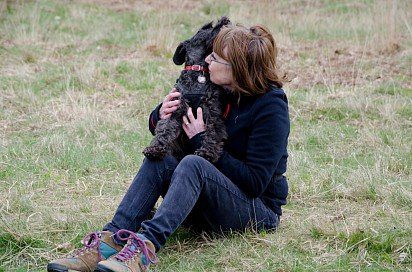

With proper upbringing, the tsvergs will never show unreasonable aggression, and the owner’s commands, including those given with the help of gestures, will be remembered for life. Showing perseverance and rigor when training a dog, we must not forget that the miniature schnauzer is extremely necessary to constantly feel love and attention. If he is deprived of them, he can easily get out of submission.
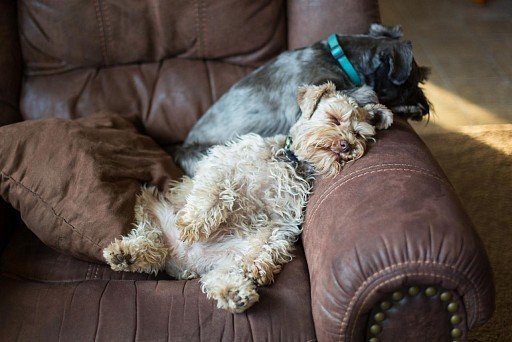

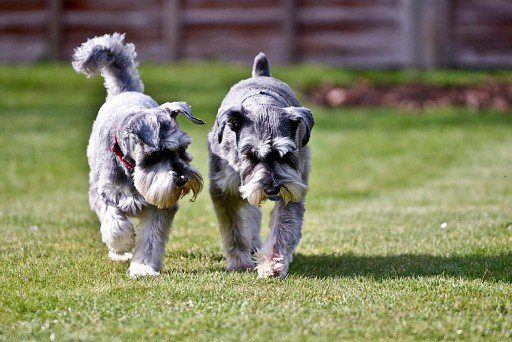

Care and maintenance
Caring for miniature schnauzers has a number of nuances due to their temperamental character and appearance.
You need to prepare in advance for the appearance of a zwerg in the house: remove outdoor decor items, shoes, pots of flowers, containers with household chemicals away. Wiring and network cables should also be inaccessible to the dog. But given the sneakiness of the puppies of this breed, their ability to quietly sneak into the most inaccessible corners, it is better to completely limit their “habitat” to one room for a while, reliably blocking access to other rooms. In the kitchen, the fidget should be allowed to be only during feeding.
Zwerg babies are fed 4 times a day, puppies from 4 to 6 months are gradually transferred to three meals a day. Miniature Schnauzers over 8 months old should preferably be fed twice a day. Many owners succumb to the manipulation of these cunning with a desperate “hungry” look, and feed the dogs extra, which should not be done.
Sweets, smoked meats, spicy dishes from the master’s table should be excluded from the dog’s diet.
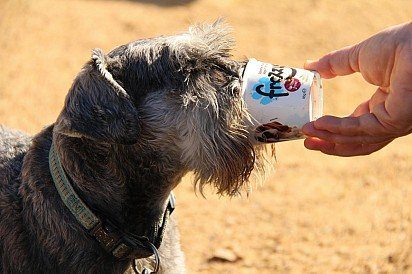

The miniature schnauzer menu must include energy-intensive, nutritious foods. Among ready-made feeds, choose premium or super-premium products for small active breeds. The zwerg, which has excellent appetite, will also not object to natural products, but it is not recommended to combine them with ready-made feeds.
The basis of natural nutrition should be meat – chicken, beef (including offal, soft raw bones, for example, chicken necks), as well as rice and oatmeal with vegetables. Weekly, the dog should be given boiled sea fish, low-fat sour-milk products, egg yolk, and non-exotic seasonal fruits.
Tsvergi need long walks and regular runs. You need to walk them at least three times a day in any weather. They get used to the regime, and if it is violated, they will not fail to remind the owner of responsibility, showing perseverance.
From an early age, the miniature schnauzer requires care for its thick and coarse coat. Despite the fact that a puppy up to 4 months does not yet need daily combing, it is better to accustom him to this procedure early, gently scratching the dog’s coat with a thin comb once every 2-3 days. Gradually, the zwerg baby needs to be taught to wash the beard. First, after feeding, clean it with a dry cloth. When the puppy gets used to it, rinse the beard with warm water, then dry it.
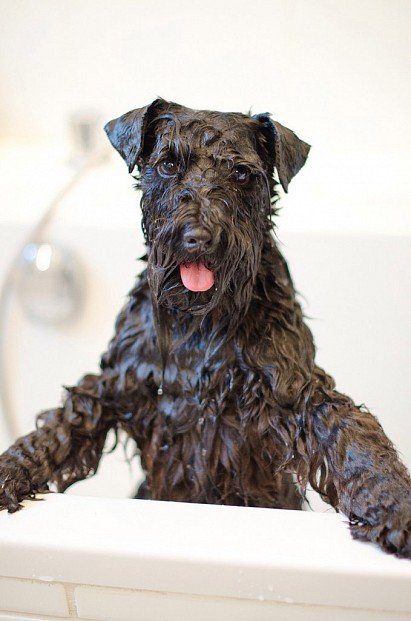

The miniature schnauzer does not need full-fledged regular bath procedures (2-3 times a year is enough), but its hair on its paws, chest, beard, and in the area of \u200b\u200bprivate places should be cleaned with water with a specialized shampoo, at least weekly. It is convenient to wash the dog in the bathroom with a shower, placing it on a rubber mat. The optimum water temperature is 38-39 °C. After that, the dog needs to be dried and combed. The thick and hard coat of the zwerg remains wet for a long time. If you have time, it’s best to dry your wet dog with several towels, one at a time. Frequent use of a hair dryer for this purpose can cause the dog’s skin to become too dry.
An adult dog should be brushed at least twice a week. Wool before this is better to slightly moisten with conditioner, spray or balm. Use two combs: comb your pet first with a slicker comb, then with a single-row comb with rounded teeth. Regular combing will relieve you of the fight against tangles, although they will still form periodically on the paws, beard and armpits of the dog.
Miniature schnauzers need regular trimming – plucking out dead hair, which in these dogs does not fall out on its own and prevents the renewal of the coat. This procedure can be carried out only after the dog has had a change of teeth. The frequency of trimming is 2-3 months. It can be done manually or with the help of special devices – a stripper and a trimmer. In the area of the ears and throat, the hair must be plucked exclusively by hand, and very delicately. Trimming, which takes a long time (at least 4 hours), is an element of communication between the owner and the pet, which helps to strengthen friendship between them. In cold weather, after trimming, the dog should walk in warm overalls for at least two weeks.
About once every one and a half months, the zwerg will have to be subjected to another procedure – a hygienic haircut. With the help of sharp scissors, you need to shorten the overgrowth of the eyebrows and beard, correcting their shape, cut off the overgrown hair between the paw pads, in the genital area and anus.
For miniature schnauzers participating in exhibitions, a hygienic haircut will not be enough. They need to be given to the experienced and gentle hands of professional groomers, since cutting tsvergs of different colors (monochrome and combined) requires a separate, strictly verified approach. For the same reason, it is also better to entrust trimming to the master.
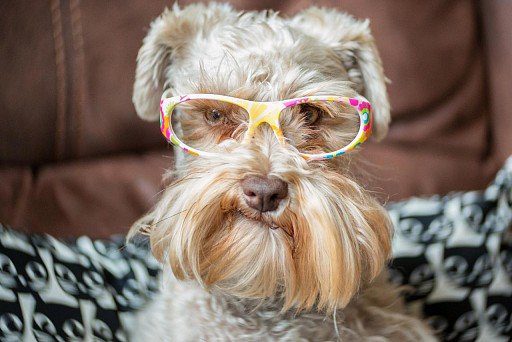

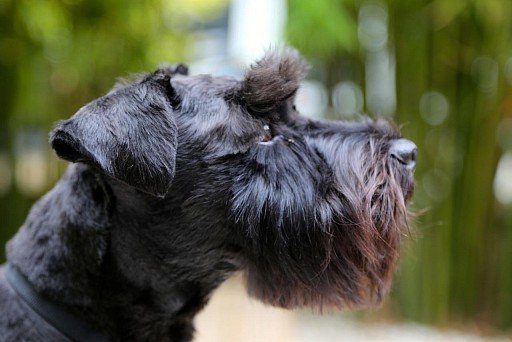

Health and disease of the miniature schnauzer
Miniature schnauzers have good health. It seems that their innate cheerfulness and optimism scare away ailments. However, they are prone to certain diseases. Among the main ones are eye diseases that usually manifest themselves in old age: glaucoma, cataracts. Veterinarians advise from a very early age to regularly wipe the corners of the eyes, where secretions accumulate, in order to prevent the formation of hard crusts.
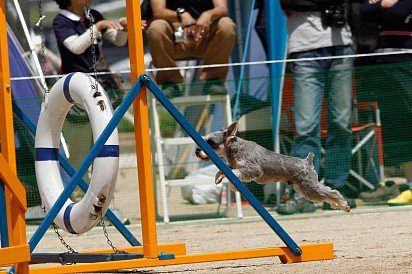

Miniature schnauzers also have allergies to certain foods. The owner should certainly find out what is the irritant. Also, the dog’s gastrointestinal tract can react painfully to a sudden change in nutrition, for example, replacing ready-made feeds with natural products. Menu changes should be gradual.
Among the diseases characteristic of zwerg are inflammation of the skin, as well as the occurrence of benign and malignant tumors on the body. Inflammation of the skin is accompanied, as a rule, by hair loss, the formation of bald patches, comedones (white and blackheads) on the back. Skin diseases are exacerbated after trimming.
Infectious diseases, poisonings instantly affect the behavior of the zwerg. Even with a slight lethargy of the dog and its unwillingness to go for a walk, you should immediately contact your veterinarian.
All basic vaccinations for miniature schnauzers must be done before the year.
How to choose a puppy
Whether you’re looking for a miniature schnauzer as a companion dog or dreaming of an award-winning champion pet, go to a kennel with a breeder whose reputation you are sure of. In this case, the purebredness of the dog will be confirmed in its puppy card, on the basis of which the adult dog will receive its own pedigree, the zwerg baby will also have a passport with information about the vaccination.
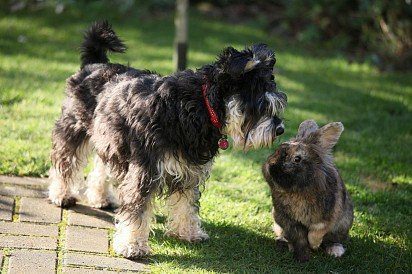

Miniature schnauzers, as a rule, begin to sell when they are 1.5-2 months old, however, those who want to buy a dog with a show perspective are better to wait and buy a grown puppy: the exterior of the miniature schnauzer fully manifests itself only by 6 months.
In any case, your chosen one should be an active, cheerful, curious, moderately well-fed puppy, a kind of sturdy boletus. His coat is supposed to be shiny, his eyes and ears clean. Feel the dog, checking if there are any “bumps” on his body. The bulge between the shoulder blades should not alarm you – this is a normal reaction to the vaccine.
Take a closer look at how the little zwerg plays with his brothers and sisters: does he show excessive aggression. Keep in mind that male puppies are more likely to start fights than females, and their fighting inclinations are the norm. It is useful to observe the parents of your future pet. They should be energetic, alert, but restrained (warning growls and barks in your direction are quite natural). Finally, make sure that the chosen baby shows interest in you, does not bare his teeth, is ready to make contact, and, in general, despite his innate alertness and distrust, is benevolent.
Photos of miniature schnauzer puppies
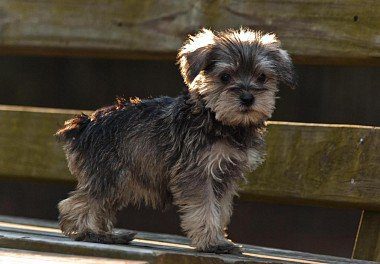

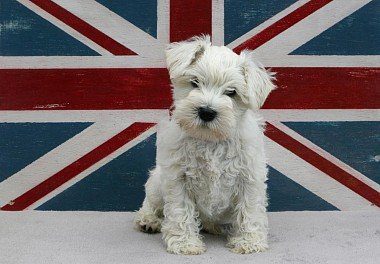

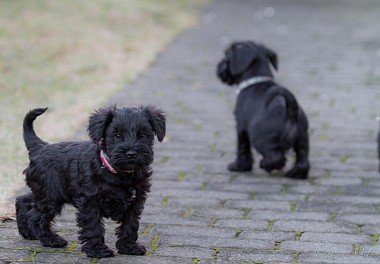

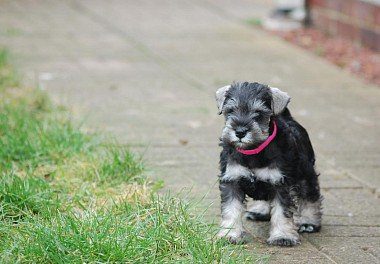

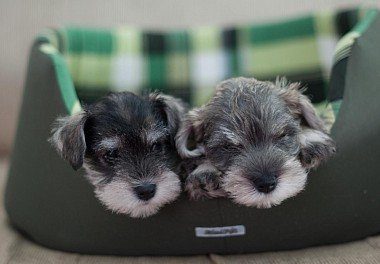

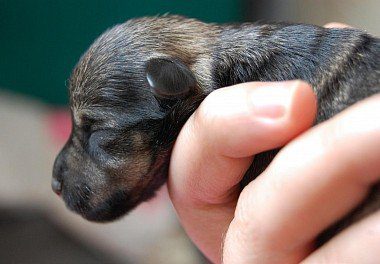

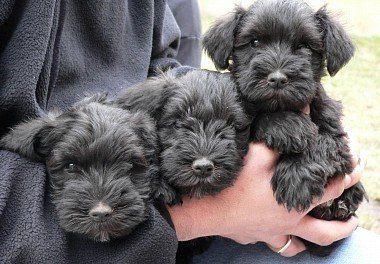

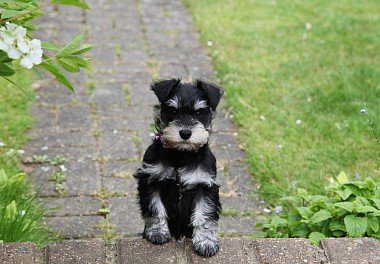

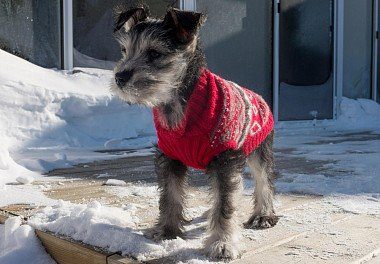

How much does a miniature schnauzer cost
The cost of a thoroughbred miniature schnauzer puppy starts from 300$. In the documents of the parents of such a puppy, the assessment for the exterior is “very good” or “good”. As a rule, there are no champions among his immediate ancestors.
Puppies of titled parents cost from 400 to 600$, depending on the region.
It is worth remembering that kids who have even the most famous ancestors in their pedigree will not necessarily become winners of championships and participants in breeding. But a healthy, cheerful purebred miniature schnauzer puppy, growing in an atmosphere of love and attention, will give you joy every day, demonstrating all the advantages of this wonderful breed.





